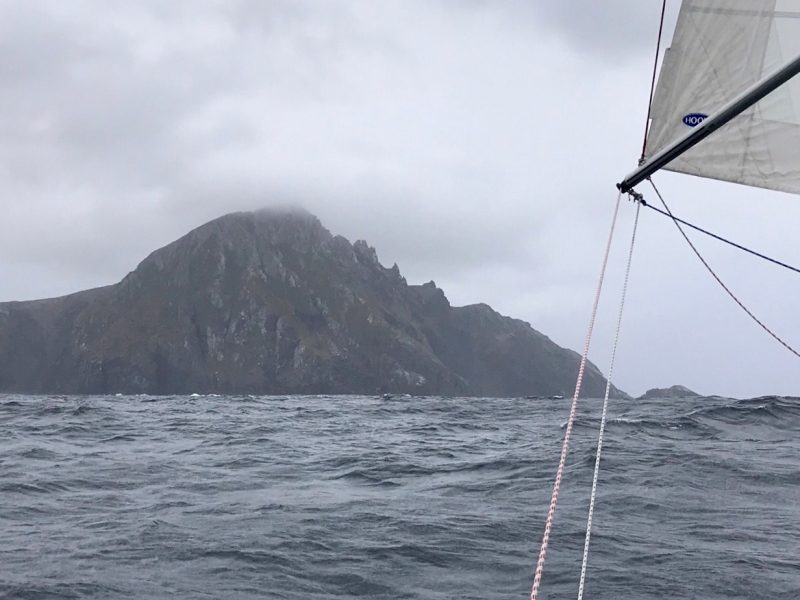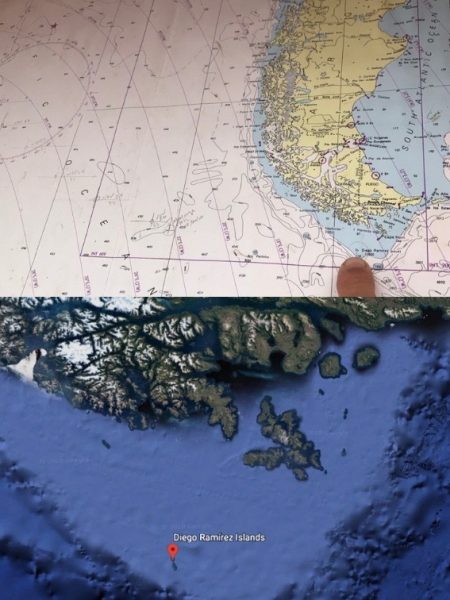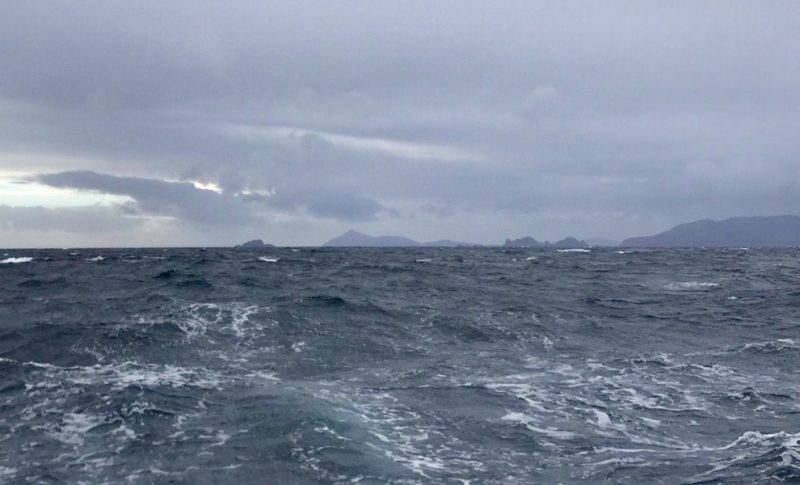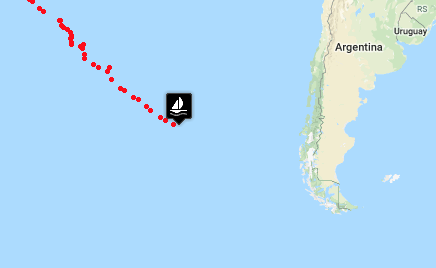
Randall Reeves’ Full Cape Horn Story
After he rounded Cape Horn on Thursday, November 29, Randall Reeves’ blogs took a little while to catch up. It was like hearing the final score of a big game, but not getting to see the highlights of how it all went down until days later. The much-awaited post came yesterday on the Figure 8 blog.
“What can one say about Cape Horn, except that he is happy to have rounded it safely and in such fine weather,” Reeves wrote. “Apart from the chilling rain, I could not have asked for it half as good. I could not have manufactured the beautiful four days of Force 8; the strong westerlies that followed, nor the fine day we had at the Horn. I could not have put myself in the way of such blessed timing. That was nothing but chance in the raw.”

The days leading up to Reeves’ rounding were marked by magnificent sailing. “One cannot call these anything but excellent, simply excellent sailing conditions — one gets to see first hand during weeks like this why the Clipper Route was the most efficient around the world for commercial shipping prior to steam and the Panama Canal. Mo has had consistently strong westerlies since November 15, when she crossed into 39S, and has logged 150 miles a day or more on all except three of them, and one of those was 149 miles. In the last seven days, we’ve sailed 1,078 nautical miles for an average of 154 miles per day.”
This extraordinary run began with four days of gale-force (or Force-8) conditions, a test that Reeves prepared for meticulously, and felt satisfied with the results on the other end. “My goal going into this blow was to not use the storm jib and to not deploy the drogue. In the first case, I reefed the working headsail down hard. There wasn’t much canvas left by the time I got done rolling, but what there was must have been three times larger than the storm jib. In the second case, I wasn’t tempted. Seas were large but not steep, and the breaking crests were lazy, falling back in on themselves.”
Following the blow, Reeves reflected, and “gnawed the bone of satisfaction. Satisfaction with Mo and how well she’d worked through a long bit of Southern Ocean heavy weather.”
Reeves’ original plan was to shoot for Isla Diego Ramirez, which is about 50 miles southwest of Cape Horn, and, “like my home island of the Farallones west of the Golden Gate Bridge, lie on the edge of the continental shelf,” Reeves wrote. “Between Diego and the Horn, water shallows quickly from a mean 15,000 feet to as little as 300 feet. Seas that have had the entire Southern Ocean in which to roam can stack up over this shelf and become dangerous in short order. There are more than a few stories of yachts rolled or pitchpoled in this area in dire weather.”

But as he drew nearer, the forecast for making an approach to the Horn seemed possible, and too tempting to pass up.
“I’ve decided to position for a run north of Isla Diego Ramirez. Why? Because I think I can. The weather looks manageable; the strong winds between now and climbing over the continental shelf are NW and will be knocked down by the peninsula; and the seas we have, a lumpy 8 and 10, aren’t enough to cause problems in shallow water. And because a chance to see Cape Horn from sea — that’s once in a lifetime.”
As he drew nearer still, Reeves was taking heavy seas — “not too high, but steep as walls and breaking often” — on his beam. He worried again about the fabled amplification of seas in the shallower water near the Horn. “Is this a silly risk, pulling in close to Cape Horn when south about Diego would be safer? What is ‘just to see it from sea’ really worth?
“It is worth all, says a voice. I keep our heading due east for the Horn. Mo can manage.” In the final days of Reeves’ approach, the sea state relaxed and the water “turned emerald green, a sure sign the coast is near. I look up to the north and see what I think are tall thunderheads hull down on the horizon. But the black smudges intermixed are the clue. In binoculars, I can see that the thunderheads are the snowy peaks of Tierra del Fuego; the black smudges are the black mountain faces.”

Upon finally passing the Horn, Reeves reflected on his luck. “My god, not just to round the damned thing, satisfaction plenty, nor even to have it hove into view from afar, but to run up to within a mile such that I could see the great slabs of black rock, the olive green mosses on its flanks, the light house. To hear the waves crash after their run around the globe. To shudder at the thought of it hulking out of the murk, lee and frothing, on a dirty night.
“Mo and I are 57 days at sea now, but really, this is where it starts.”
Meanwhile . . .
And don’t forget that two months after leaving Victoria, BC, Jeanne Socrates continues to close in on Cape Horn . . .

